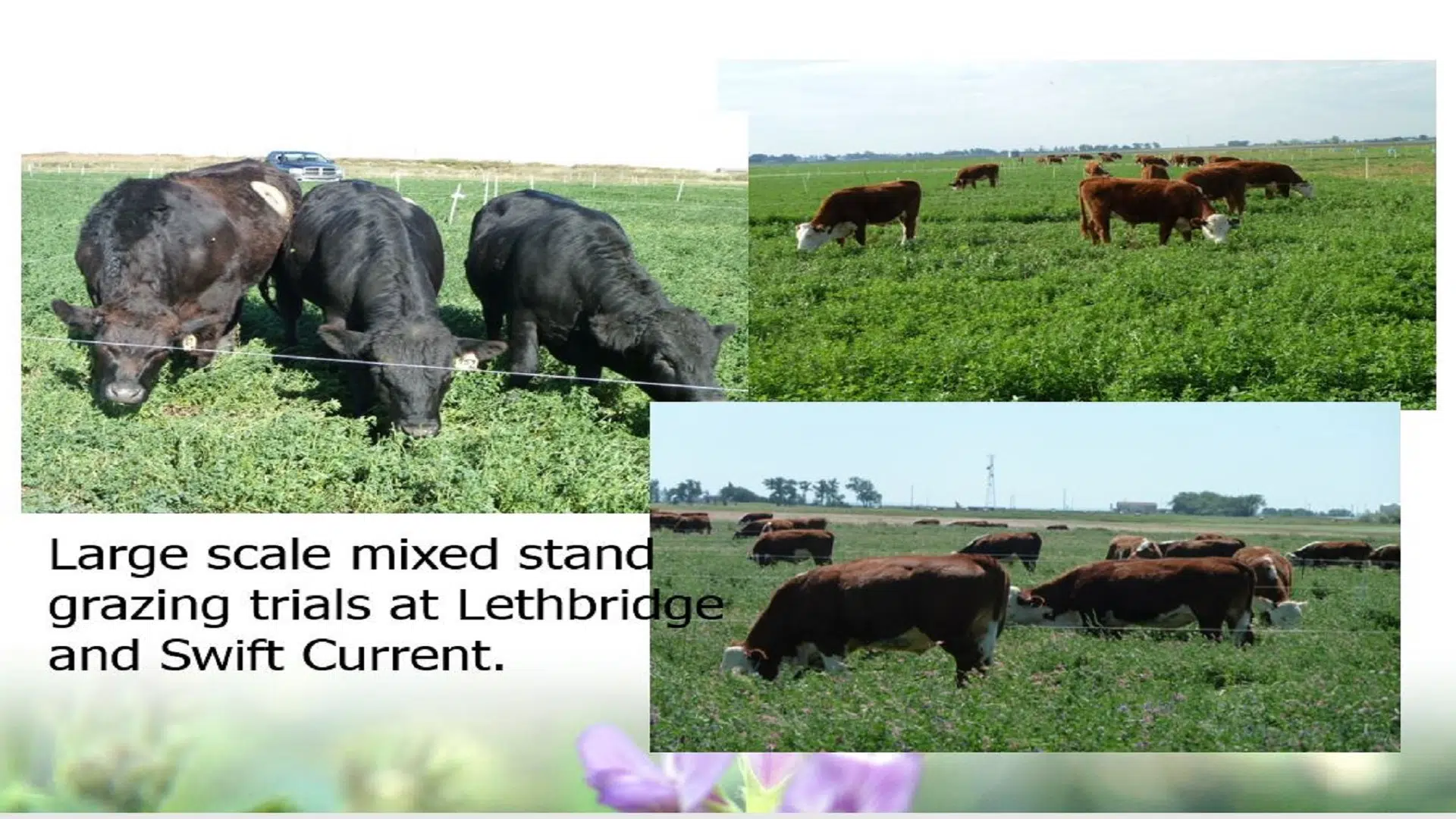
New legume varieties, seeding practices, could be keys to prevent deadly cattle bloat
LETHBRIDGE – A Lethbridge scientist and his team are hoping improved marketing for new varieties of the sainfoin legume, along with specific seeding practices, can help save cattle farmers billions of dollars in the future.
Dr. Surya Acharya is a forage plant breeder at the Lethbridge Research Centre. Over the last 10 years or so, he has bred the legume so that it can not only grow well alongside alfalfa and can help prevent cattle bloat, but it will also grow for several years at a time.
Cattle farmers grow alfalfa in their pastures because it is highly nutritious and cattle love to eat it. However, growing any other legumes alongside alfalfa to cut down on cattle bloat in the past has proven extremely difficult. The alfalfa can cause toxic soil conditions for other plants around it, among other issues.
The problem with cattle solely eating alfalfa while they’re grazing, says Acharya, is that the animals can gorge on it, quickly causing the potentially deadly bloating condition. The animal can not release the gas by burping or becoming flatulent.


